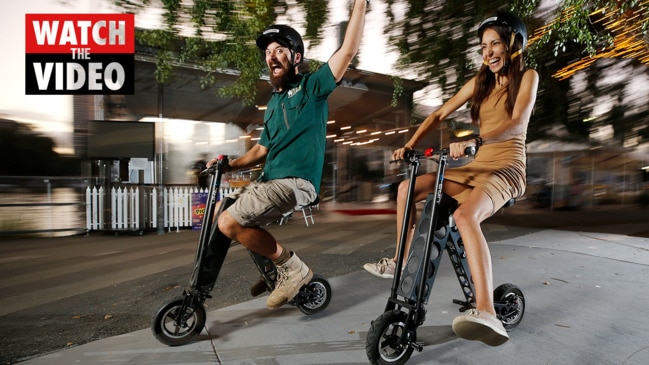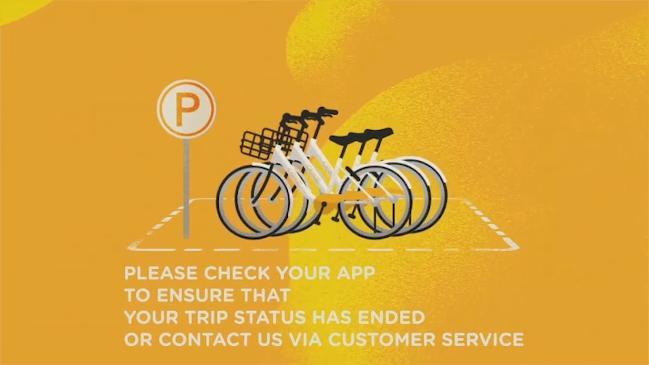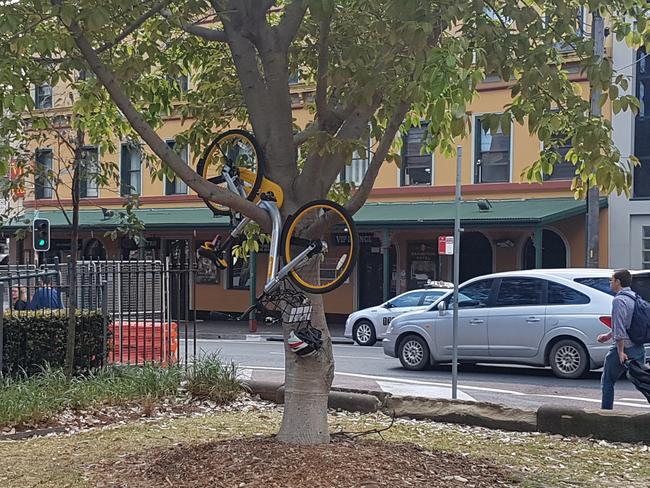How do bike sharing services like oBike and ReddyGo make money?
ARE the bike sharing services in Melbourne and Sydney even turning a profit or will they soon disappear?

YOU might have seen GPS tracked dockless bicycles on footpaths across Melbourne and Sydney: on top of bus stops, in garden beds or even dumped in the Yarra River.
Other than providing a source of entertainment for vandals dumping the bikes, the schemes aim to offer a cheap alternative to public transport or driving.
Both Melbourne and Sydney have seen the introduction of oBikes — yellow, GPS-tracked rental bicycles that rent for just $1.99 for half an hour, plus $69 membership fee that is refundable on request.
Sydney has also seen the introduction of ReddyGo — red, GPS tracked bikes that rent just $1.99 for half an hour, plus a $99 membership fee that is also refundable on request.
Pretty good value, right?
As an expert in urban and regional development, strategic planning and analytical methods in urban studies, Professor Sun Sheng Han said the low hire cost makes it a slow burn for the companies involved.
“The sense of the argument is that in the early stage of operation many of these schemes do not make money as they are still paying back the venture capital,” he told news.com.au
“However, as they get more coverage and larger fleets, making money is possible.”
The most straightforward money-maker is the profit generated from the ride-and-pay model — the $1.99 the company gets from the customer per half-hour of use.
If a bike is used for 10 half-hour trips per day, it would have a daily return of $19.90. If it were used at this frequency for a three-month period it would return $1,791.
Prof. Sheng Han estimates the initial outlay of the service and operational costs like repairs or replacements would be recouped over this three-month period if each bike was used at this frequency.
But the likelihood of every bike being rented this often seems low, especially given the increased competition.

WHAT OTHER WAYS IS MONEY MADE?
With over 10,000+ oBike apps downloaded on iOS and Android devices, and similar amounts from ReddyGo, data from the GPS tracked bikes could offer a source of secondary income.
“A huge data set can be examined to assist future business developments, planning and management in local councils and marketing companies,” Prof. Sheng Han told news.com.au.
The data of the cycling behaviour also helps to give a more detailed picture when combined with that taken from taxi and public transport systems.
There is also money that can be made from the refundable membership fees.
“It’s not a profit in the sense they can spend that money. They need to keep the deposit in case someone wants to be refunded, but there is the large interest that the sizeable pool of money they are holding for the operation would earn.”
WHAT ARE THE RISKS?
It seems there is money to be made over time with this concept if people are willing to keep using the service, but this doesn’t mean it’s risk free.
Prof. Sheng Han said while there are only a handful of services in operation at the moment, there could soon be more players looking to enter the market.
“It’s undoubtably the early stages and fierce competition is going to see smaller companies not able to compete with the larger fleets,” he said.
Another large risk comes from the destruction or theft of bikes from the service, which is currently a big issue in Melbourne and Sydney.

Obike, Reddy Go are more than bike-sharing companies https://t.co/S7k9zTiGpR - #QR pic.twitter.com/AHwC1lV5Sa
— The QR Code Times (@QRTimes) October 1, 2017
Melbournians have something against these bikes😂😂😂 #Melbourne #obike pic.twitter.com/A50LyHw1Yk
— Glass full kinda Gal (@LauraJB1225) September 19, 2017
@MKTG1103 This Obike concept seems like a great idea...but, like this bike I saw today, people seem to be destroying the company's image! pic.twitter.com/GjusFmHHlo
— Nicholas Foster (@Nedfoster148) September 5, 2017
Prof. Sheng Han said history has shown this behaviour can negatively impact the companies involved.
“In China, some of the smaller companies couldn’t continue to support the service because of the number of bikes that were stolen or damaged,” he said.
SO WHAT’S THE VERDICT?
Prof. Sheng Han said cyclist friendly cities like Amsterdam can give hope to the bike sharing economy.
“The scheme itself is quite new and is creating a concept that fits into the long range health and development of a city,” he said.
“With the long-term prospect for investors, there could one day be lots of competition across different geographic areas”
He said this was a factor that could one day lead to the replacement of cars or public transport.
Even oBike are feeling confident for what is ahead.
“Since our launch, we have had a few who abused our bikes either by dismantling them or throwing them into canals. This was disappointing,” a spokesman told news.com.au.
“For every abuse case, there had been many more who exhibited positive riding behaviours. We urge all users to treat our bikes as if they would their own. This is to ensure that all users can continue to enjoy and benefit from the service.
“We see bike-sharing being integrated as part of the wider public transportation. It will operate as an essential but complementary service to the entire transportation network.”
What do you think of bike sharing services? Continue the conversation in the comments below or with Matthew Dunn on Facebook and Twitter.



